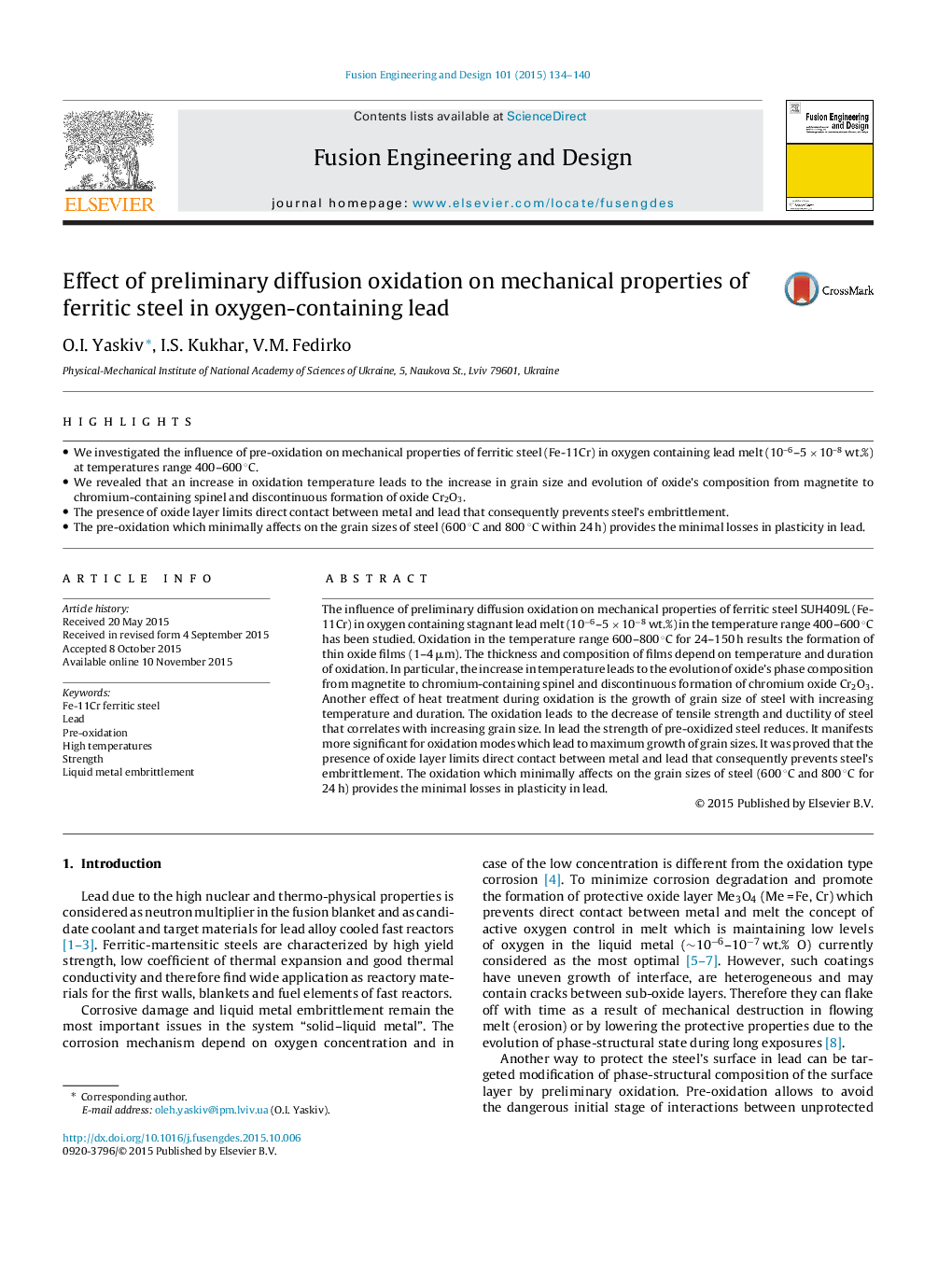| Article ID | Journal | Published Year | Pages | File Type |
|---|---|---|---|---|
| 270933 | Fusion Engineering and Design | 2015 | 7 Pages |
•We investigated the influence of pre-oxidation on mechanical properties of ferritic steel (Fe-11Cr) in oxygen containing lead melt (10–6–5 × 10–8 wt.%) at temperatures range 400–600 °C.•We revealed that an increase in oxidation temperature leads to the increase in grain size and evolution of oxide's composition from magnetite to chromium-containing spinel and discontinuous formation of oxide Cr2O3.•The presence of oxide layer limits direct contact between metal and lead that consequently prevents steel's embrittlement.•The pre-oxidation which minimally affects on the grain sizes of steel (600 °C and 800 °C within 24 h) provides the minimal losses in plasticity in lead.
The influence of preliminary diffusion oxidation on mechanical properties of ferritic steel SUH409L (Fe-11Cr) in oxygen containing stagnant lead melt (10−6–5 × 10−8 wt.%) in the temperature range 400–600 °C has been studied. Oxidation in the temperature range 600–800 °C for 24–150 h results the formation of thin oxide films (1–4 μm). The thickness and composition of films depend on temperature and duration of oxidation. In particular, the increase in temperature leads to the evolution of oxide's phase composition from magnetite to chromium-containing spinel and discontinuous formation of chromium oxide Cr2O3. Another effect of heat treatment during oxidation is the growth of grain size of steel with increasing temperature and duration. The oxidation leads to the decrease of tensile strength and ductility of steel that correlates with increasing grain size. In lead the strength of pre-oxidized steel reduces. It manifests more significant for oxidation modes which lead to maximum growth of grain sizes. It was proved that the presence of oxide layer limits direct contact between metal and lead that consequently prevents steel's embrittlement. The oxidation which minimally affects on the grain sizes of steel (600 °C and 800 °C for 24 h) provides the minimal losses in plasticity in lead.
